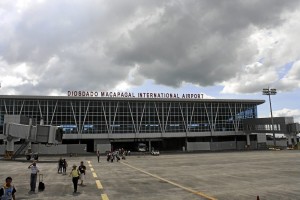Relocating the Philippines’ major international airport to Clark Freeport, Pampanga, would not solve the problems in the country’s air transport system, the world’s biggest aviation industry group said.
If anything, the government’s plan to move the Ninoy Aquino International Airport (Naia) 100 kilometers away from the metropolis would only make traveling more inconvenient to passengers, the International Air Transportation Association (Iata) said.
“In my view, Clark is not the solution. It’s too far away from Manila, which is where people want to go,” Iata chief executive officer Tony Tyler said on Thursday.
Speaking to reporters, Tyler conceded that Naia needed to be relocated to a complex that has more space for expansion to accommodate the growing needs of the country’s aviation sector.
Tyler said Iata would urge the government to consider other locations for the new airport, preferably somewhere closer to Metro Manila. Otherwise, he said, the Philippines would become the only country in the world whose major airport was so far away from its central business districts.
“If you want to cite Narita and Tokyo as an example, you have to know that Narita is closer to Tokyo than Manila is to Clark,” Tyler said.
Iata’s view mirrored recent suggestions by flag carrier Philippine Airlines (PAL) for the construction of a new airport in nearby areas north of Metro Manila.
PAL president Ramon S. Ang earlier said Clark was too far from Manila to be a viable option to replace Naia, a view that was countered by the Department of Transportation and Communications (DOTC) this week.
The DOTC said Clark remained the government’s only “viable and practical” option for the country’s new major hub.
Tyler, meanwhile, said the planned construction of a high-speed rail line that would bring people from Manila to Clark in 45 minutes would be a costly experiment that would most likely fail.
Tyler said the Philippine aviation sector has fallen far behind other countries in the region, many of which have developed their air transport infrastructure to boost travel.
“In the last 15 or so years, we have seen whole new airports open in Hong Kong, Nagoya, Seoul, Kuala Lumpur, Shanghai, Guangzhou and Bangkok,” he said. “These countries place aviation connectivity as a core component of their economic strategy.”
He said the Philippine aviation industry has suffered from “many years of inadequate investment in infrastructure and heavy tax burdens” by past administrations. He said Iata was confident that the new administration would take steps to allow the Philippines to catch up with its neighbors.
